One July morning last year, Brittany Foust was bringing horses in from the 30-acre field on her family’s property near the foothills of Boulder, Colorado, when she saw something was seriously wrong with one of the farm’s horses, Hog’s Hollow.
“He kind of looked like he had rolled in barbed wire, which our fencing isn’t barbed wire, but we get pretty high winds, so we didn’t know if some had blown in, and he had gotten tangled in it,” she said. He’d degloved his right front leg, injured his shoulder, and his neck, side and haunches were littered with scratches.
Though she and her family walked the fields for hours searching for answers, they never found anything concrete, so they concluded it must have been a freak accident.
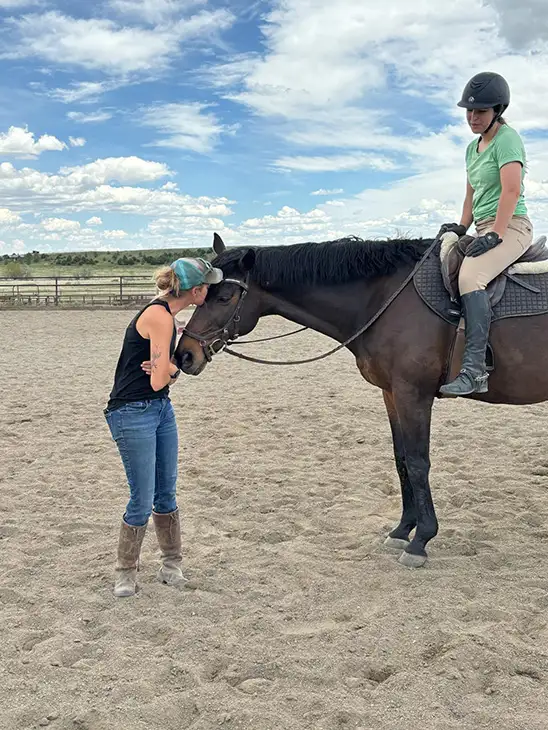
“Oink,” a 17-year-old Thoroughbred, (Perfect Soul—Crousille, Highest Honor) had a long racing career that led to an eventing career before ending up at the nonprofit Center for Racehorse Retraining in Cheyenne, Wyoming. Foust, a registered psychotherapist and former three-day eventer, took him on a care lease in 2022. He became a treasured lesson horse for her, taking adults and children from their first rides to their first shows, in addition to doing therapy work for her Body N Soul Integrative Equestrian Services.
“He is the sweetest horse in the barn,” Foust said. “Literally, I can put anybody on him. He knows his job super well.”
But after his mysterious—and extensive—injuries, the gelding’s prognosis was grim. Foust’s veterinarians Sara Moore and Christy Downey of Quality Equine Vets presented her with three options: take him to Colorado State University for surgery on his front leg, try treat him at home with regional limb perfusion and antibiotics, or euthanize him, as the risk of infection was high because the damage on his leg penetrated the tendon sheath.
With those options weighing on her heavily, Foust called up the Center for Racehorse Retraining in Wyoming. The organization was still involved with Oink’s life, and Foust wanted to discuss a game plan. All parties agreed to try the limb perfusion and antibiotics at home to see if his injuries could be managed.
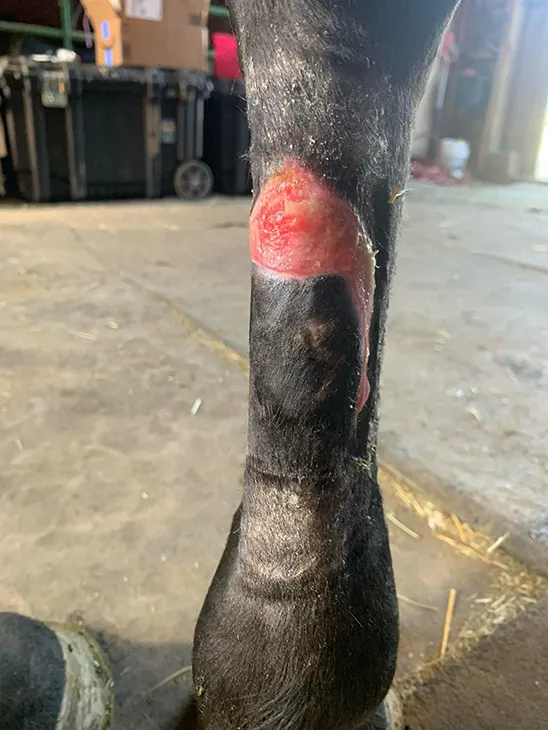
The veterinarian stitched up the deeper lacerations, including a flap of skin on the degloved front right, and started Oink on a protocol of regional limb perfusions, which maximize antibiotic penetration into the synovial fluid in the joints and surrounding tissues. Early on, Oink received penicillin, gentamicin and Banamine to ward off infection and keep him comfortable.
“We didn’t know how much damage had been done to the tendons in all of this,” Foust said of Oink’s chances of returning to riding, should he survive his initial recovery. “We didn’t know if he was just going to be serviceably sound, or if he would be fully sound or if he would have to be retired. So that was definitely a waiting game basically with him.”
ADVERTISEMENT
It wasn’t until two weeks later that they got some answers on what had had happened to Oink.
Once again Foust was moving horses around in the early morning when she found her competition mare Salida Del Sol covered in blood near the pasture’s water trough. “Sunny’s” injuries were eerily similar to Oink’s, but more severe. She, too, had a degloved right foreleg, but with the cannon bone exposed. She’d lost her fly mask, and her face and body were shredded by puncture wounds and lacerations. Beside her were a pair of yearlings and a 2-year-old, who, though covered in Sunny’s blood, were unharmed.
While on the phone with Quality Equine Vets, Foust triaged the mare, applying bandages to attempt to quell the bleeding as she awaited the vet’s arrival as it was unadvisable to put her on a trailer in her current state. They used ketamine to induce anesthesia so they could clean and suture her multiple wounds. As the veterinarian sutured, Foust started asking about the likelihood of having two horses with near identical injuries.
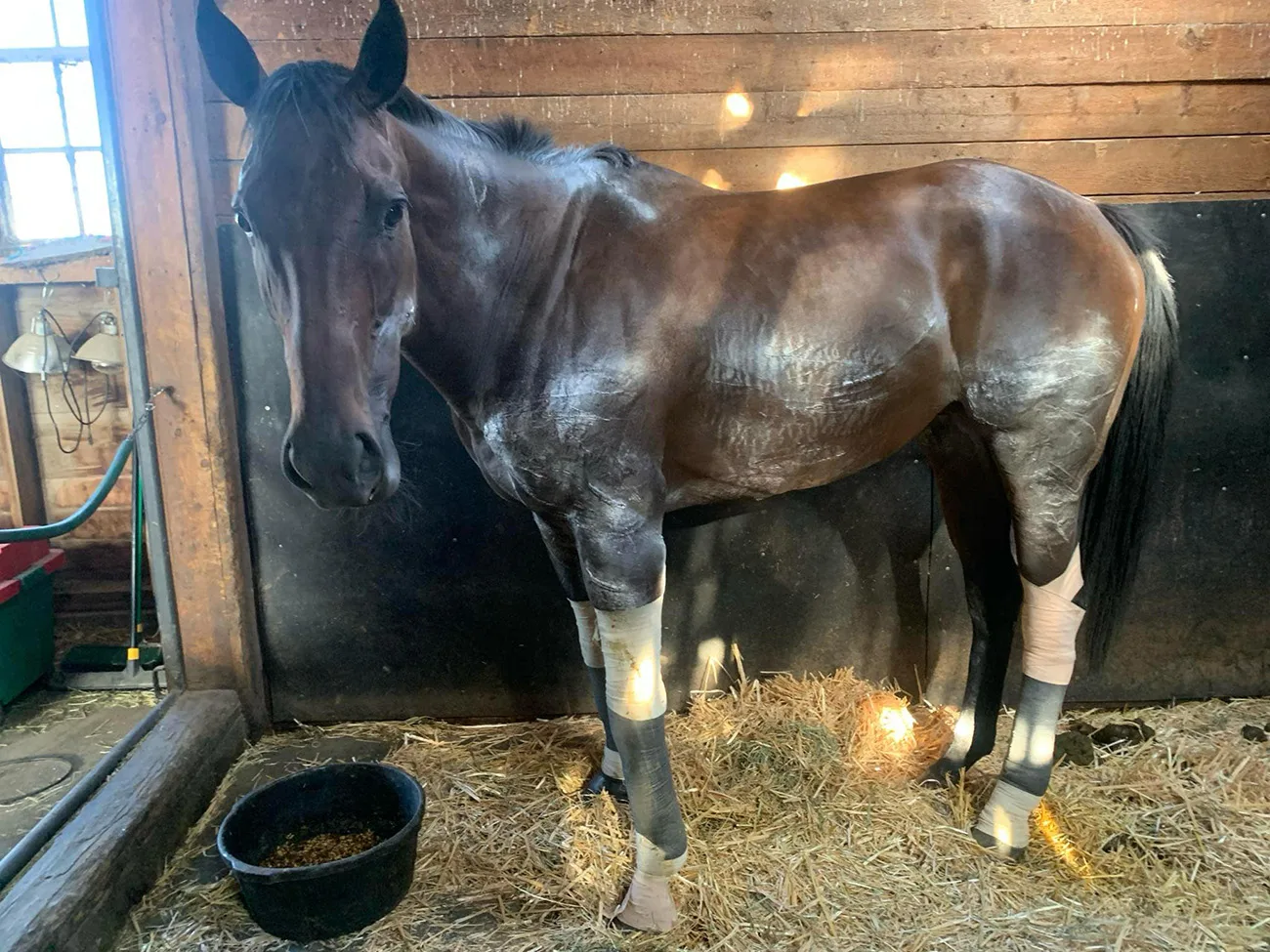
“What got me was, it looked like something had grabbed her face,” Foust said. “The marks are right around her jugular, which are really typical mountain lion attack marks. And so I asked the vet, ‘What is the likelihood of two horses coming in with almost identical injuries like this?’ And she said, ‘Statistically, almost none.’ ”
The vet said she suspected the injuries were the result of an animal attack and advised Foust to call the Colorado Parks and Wildlife department.
Foust followed the vet’s advice, and after describing the two incidents and submitting pictures of the injured horses, a CPW officer was assigned to visit their farm and search for evidence. The investigation didn’t yield anything definitive, though they located the missing fly mask, which appeared to have been clawed, so Sunny’s injuries were classified as a suspected mountain lion attack.
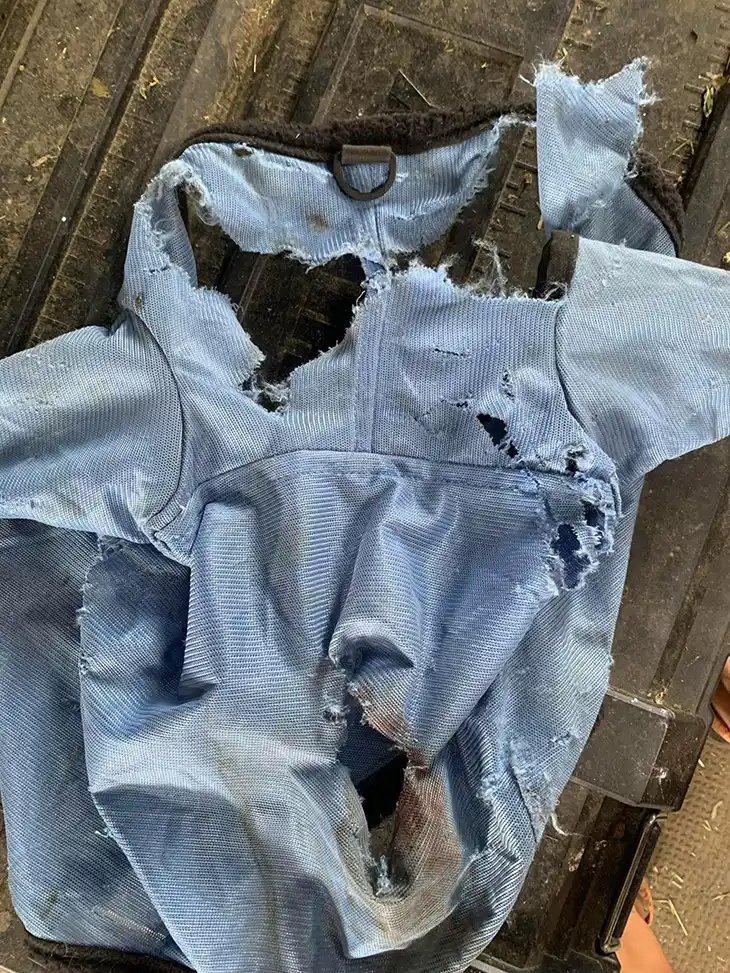
By the CPW officer’s estimation, Foust said, the attack was probably the result of two juveniles who’d come down out of the mountains either in search of new territory or learning to hunt. They believe Oink was targeted because he tended to hang out by himself in the field. In Sunny’s case, the mountain lions were likely after one of the young horses with her.
“Our belief is that Sunny turned around and fought back, which is why she was so shredded in kind of non-traditional ways, and that’s how they kind of got her that good,” Foust said. “She managed to save all the babies that she was living with, but she ended up with a sequestrum [a piece of necrotic bone that detaches from healthy tissue] and an incomplete fracture of her left medial splint bone up high by the joint.”
By the time of Sunny’s suspected attack, Oink was making good progress in his recovery. Though his healing was slowed by some bleeding through his stitches, the flap from his degloved leg showed signs of healing, the open wounds were closing, and it appeared he would at least be able to live the remainder of his life at pasture.
ADVERTISEMENT
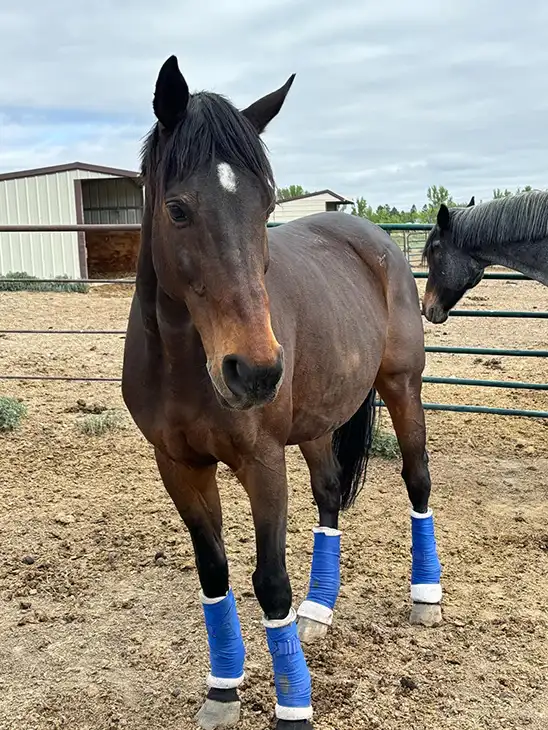
But as Oink was mending, Sunny declined. One of her puncture wounds led to an infection in her carpal joint. She spiked a fever and became non-weightbearing, earning her a trip to Colorado State University for surgery to lavage and debride the joint, followed by regional limb perfusions.
Despite intensive medical intervention, the joint infection was persistent. Due to the severe lameness it caused, the Fousts ultimately euthanized her for humane reasons.
Oink, on the other hand, was cleared to begin work under saddle in October, three months after the suspected mountain lion attack. Early on he showed occasional “mechanical lameness” in periods of an abnormal gait likely caused by scarring on connective tissues. Foust let him dictate the speed of his rehab, and he slowly built fitness and strength.
In April, Oink started jumping again.
“He just told us he was ready to do it, and then just crushed it like he just wanted to come back, and he wanted to play the game,” Foust said.
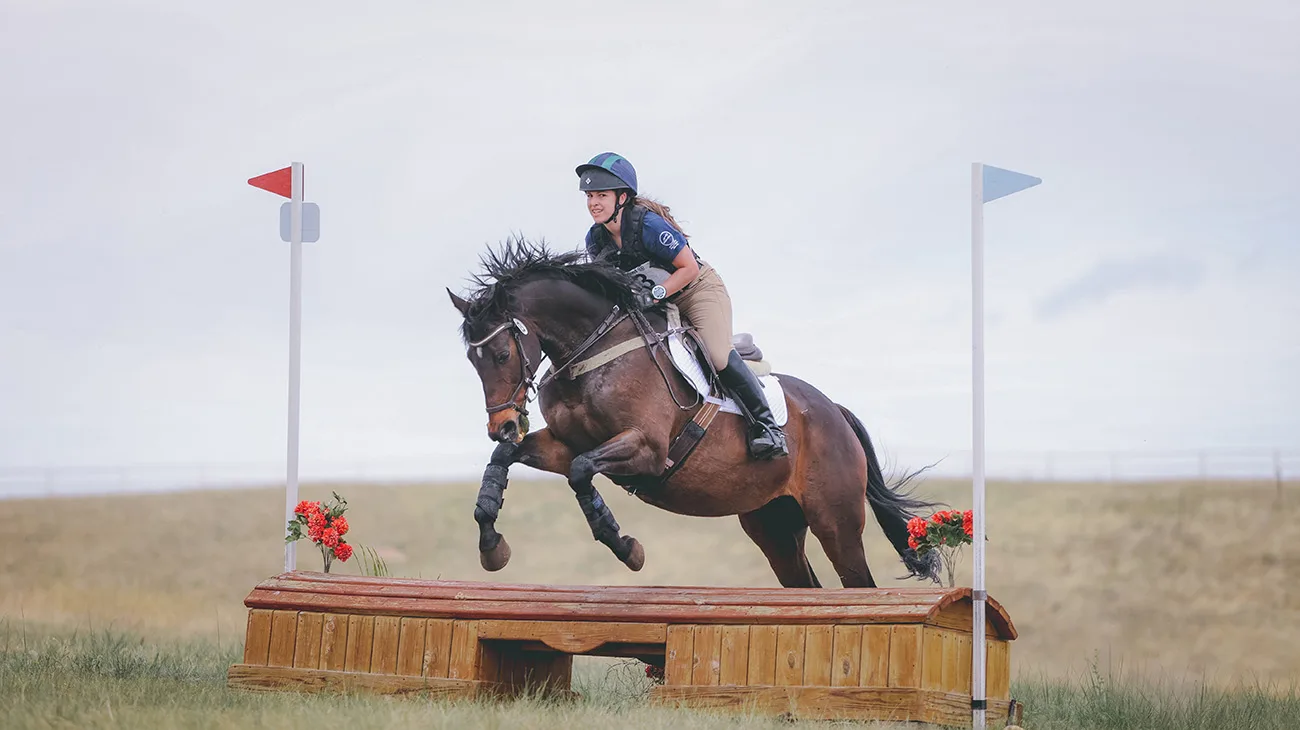
As Oink’s strength returned, Foust let him decide whether they could ask a bit more. Though she waited to see if he’d be unsound the next day, the now 18-year-old kept trucking along happily.
Today, other than his front leg, most of Oink’s scars aren’t easily noticeable anymore, but his skin seems more sensitive since the attack, so now Foust uses only the softest brushes on him.
In May he competed at starter at The Spring Event at Archer (Wyoming) with adult amateur Eryn Blakely, winning on his dressage score of 35.3 to qualify them for the Area IX championships, which will also take place at The Event at Archer in August.
“As long as he wants to do his job, he gets to do whatever he wants,” Foust said.
Do you know a horse or rider who returned to the competition ring after what should have been a life-threatening or career-ending injury or illness? Email Kimberly at kloushin@coth.com with their story.














